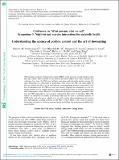Files in this item
Understanding the science of portion control and the art of downsizing
Item metadata
| dc.contributor.author | Hetherington, Marion | |
| dc.contributor.author | Blundell-Birtill, Pam | |
| dc.contributor.author | Caton, Samantha | |
| dc.contributor.author | Cecil, Joanne E. | |
| dc.contributor.author | Evans, Charlotte | |
| dc.contributor.author | Rolls, Barbara | |
| dc.contributor.author | Tang, Tang | |
| dc.date.accessioned | 2018-05-28T09:30:07Z | |
| dc.date.available | 2018-05-28T09:30:07Z | |
| dc.date.issued | 2018-05-24 | |
| dc.identifier | 252973571 | |
| dc.identifier | ef84f530-e58c-41bd-a71e-88a0d121f93c | |
| dc.identifier | 85047350555 | |
| dc.identifier | 000440178600017 | |
| dc.identifier.citation | Hetherington , M , Blundell-Birtill , P , Caton , S , Cecil , J E , Evans , C , Rolls , B & Tang , T 2018 , ' Understanding the science of portion control and the art of downsizing ' , Proceedings of the Nutrition Society , vol. First View . https://doi.org/10.1017/S0029665118000435 | en |
| dc.identifier.issn | 0029-6651 | |
| dc.identifier.other | ORCID: /0000-0003-4779-6037/work/60196851 | |
| dc.identifier.uri | https://hdl.handle.net/10023/13556 | |
| dc.description | This work was supported by the Biological and Biotechnology Sciences Research Council Diet and Health Research Industry Club (BB/M027384/1) | en |
| dc.description.abstract | Offering large portions of high-energy-dense (HED) foods increases overall intake in children and adults. This is known as the portion size effect (PSE). It is robust, reliable and enduring. Over time, the PSE may facilitate overeating and ultimately positive energy balance. Therefore, it is important to understand what drives the PSE and what might be done to counter the effects of an environment promoting large portions, especially in children. Explanations for the PSE are many and diverse, ranging from consumer error in estimating portion size to simple heuristics such as cleaning the plate or eating in accordance with consumption norms. However, individual characteristics and hedonic processes influence the PSE, suggesting a more complex explanation than error or heuristics. Here PSE studies are reviewed to identify interventions that can be used to downsize portions of HED foods, with a focus on children who are still learning about social norms for portion size. Although the scientific evidence for the PSE is robust, there is still a need for creative downsizing solutions to facilitate portion control as children and adolescents establish their eating habits. | |
| dc.format.extent | 9 | |
| dc.format.extent | 1254191 | |
| dc.language.iso | eng | |
| dc.relation.ispartof | Proceedings of the Nutrition Society | en |
| dc.subject | Portion size | en |
| dc.subject | Food intake | en |
| dc.subject | Children | en |
| dc.subject | Adolescents | en |
| dc.subject | Energy density | en |
| dc.subject | RA0421 Public health. Hygiene. Preventive Medicine | en |
| dc.subject | RJ101 Child Health. Child health services | en |
| dc.subject | BF Psychology | en |
| dc.subject | T-NDAS | en |
| dc.subject | SDG 3 - Good Health and Well-being | en |
| dc.subject.lcc | RA0421 | en |
| dc.subject.lcc | RJ101 | en |
| dc.subject.lcc | BF | en |
| dc.title | Understanding the science of portion control and the art of downsizing | en |
| dc.type | Journal article | en |
| dc.contributor.sponsor | BBSRC | en |
| dc.contributor.institution | University of St Andrews. School of Medicine | en |
| dc.contributor.institution | University of St Andrews. Population and Behavioural Science Division | en |
| dc.contributor.institution | University of St Andrews. Health Psychology | en |
| dc.identifier.doi | 10.1017/S0029665118000435 | |
| dc.description.status | Peer reviewed | en |
| dc.identifier.grantnumber | BB/M027384/1 | en |
This item appears in the following Collection(s)
Items in the St Andrews Research Repository are protected by copyright, with all rights reserved, unless otherwise indicated.

